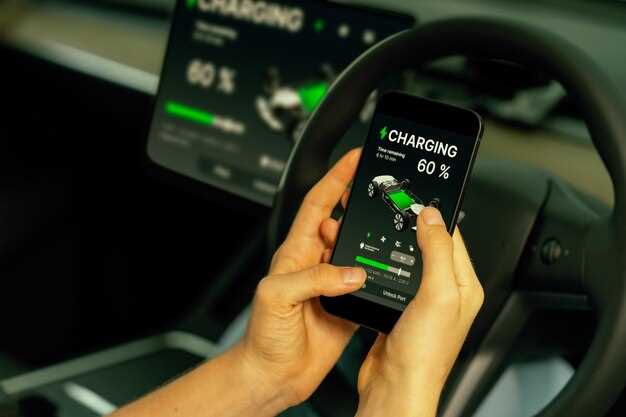
For many drivers, achieving optimal fuel economy in their vehicles is a top priority, especially when it comes to hybrid models like those from Toyota. With rising fuel costs and increasing environmental consciousness, maximizing your mpg becomes essential not only for economical driving but also for reducing your carbon footprint. Understanding how to get the most out of your Toyota hybrid can significantly impact your driving experience and the longevity of your vehicle.
Toyota hybrids are designed with advanced technology that enables better fuel efficiency compared to traditional gasoline engines. However, to truly unlock their potential, drivers must adopt specific practices and maintain their vehicles properly. By leveraging features unique to hybrid vehicles and understanding how driving habits can affect mpg, you can enhance your mileage and enjoy significant savings at the pump.
In this article, we will explore practical tips and strategies to maximize fuel economy in your Toyota hybrid vehicle. From routine maintenance to driving techniques, these insights will help you make the most of every gallon of gas, ensuring that your journey is not only efficient but also more enjoyable.
Understanding Regenerative Braking for Improved MPG
Regenerative braking is a key feature of Toyota hybrid vehicles that significantly enhances fuel economy, measured in miles per gallon (mpg). This innovative technology captures kinetic energy that would otherwise be lost during braking and converts it into electrical energy, which is then stored in the vehicle’s battery. This process not only reduces wear on traditional brake components but also increases overall efficiency.
When you apply the brakes in a hybrid vehicle, the electric motor switches roles and operates as a generator. As the vehicle slows down, the generator transforms the kinetic energy into electricity. This electricity recharges the battery, which can later be used to power the electric motor, resulting in improved mpg by reducing the reliance on the internal combustion engine.
One of the primary benefits of regenerative braking is its ability to enhance the efficiency of the driving experience. By maximizing the energy recovery during deceleration, drivers can experience less frequent stops at gas stations, facilitating longer journeys on a single tank of fuel. Additionally, drivers who adopt smoother driving habits–such as gradual acceleration and braking–can further optimize the effectiveness of regenerative braking, leading to even higher mpg ratings.
Understanding how to utilize regenerative braking effectively is crucial for Toyota hybrid owners who wish to maximize fuel economy. Engaging the “Eco” driving mode, accelerating gently, and anticipating stops will help maintain momentum and enhance energy recovery. Over time, these practices not only benefit the environment by reducing emissions but also contribute to significant savings on fuel costs.
In conclusion, regenerative braking is a vital component of Toyota hybrid vehicles that directly contributes to improved fuel economy. By leveraging the energy recovery capabilities of this system, drivers can achieve higher mpg and enjoy a more efficient and economical driving experience.
Tire Maintenance and Its Impact on Fuel Efficiency

Proper tire maintenance is crucial for maximizing fuel economy in Toyota hybrid vehicles. Tires that are well-maintained can significantly enhance the vehicle’s miles per gallon (mpg) performance, while neglect can lead to decreased efficiency and increased fuel consumption.
One of the most important factors in tire maintenance is ensuring that tires are properly inflated. Under-inflated tires can increase rolling resistance, making the engine work harder and thereby decreasing fuel economy. According to studies, driving on under-inflated tires can reduce mpg by up to 3%. Regularly checking tire pressure, especially before long trips or changes in weather, can help maintain optimal inflation levels.
In addition to inflation, tread depth plays a critical role in fuel efficiency. Worn tires with insufficient tread can compromise traction and increase rolling resistance, further impacting mpg. It is recommended to inspect tire tread regularly and replace tires that show signs of excessive wear or damage to ensure optimal performance.
Another important aspect of tire maintenance is wheel alignment. Misalignment can cause uneven tire wear and can lead to increased drag, ultimately reducing fuel efficiency. Regular alignment checks and adjustments can help ensure that the vehicle operates smoothly, thus enhancing mpg metrics.
Rotating tires regularly is also essential for maintaining even wear and prolonging tire life. Following the manufacturer’s recommended rotation schedule can help achieve balanced performance and sustained fuel economy across all four tires.
In conclusion, tire maintenance is not just about safety; it directly influences fuel efficiency in Toyota hybrid vehicles. By ensuring proper inflation, checking tread depth, maintaining alignment, and rotating tires, drivers can significantly improve their vehicle’s mpg performance, making tire care an integral part of any fuel-saving strategy.
Optimal Driving Techniques to Enhance Hybrid Performance

To maximize fuel economy and overall efficiency in Toyota hybrid vehicles, adopting optimal driving techniques is crucial. These techniques focus on minimizing energy consumption while maximizing the utilization of the vehicle’s hybrid system.
1. Smooth Acceleration and Braking: One of the most effective ways to improve efficiency is through smooth acceleration and braking. Rapid acceleration leads to higher fuel consumption, so gradually increasing speed aids in maintaining energy efficiency. Similarly, using gentle braking instead of hard stops allows the regenerative braking system to capture more energy and recharge the battery effectively.
2. Utilize EV Mode: Many Toyota hybrid vehicles are equipped with an Electric Vehicle (EV) mode, which allows the car to run solely on electric power for short distances. Engage this mode when driving at low speeds, such as in city traffic or during parking maneuvers. This technique conserves fuel and enhances overall efficiency.
3. Anticipate Traffic Conditions: Awareness of traffic flow plays a significant role in hybrid driving. Anticipating stops, starts, and slowdowns enables drivers to maintain a steady pace, reducing the need for sudden acceleration and braking. By keeping a safe distance from the vehicle ahead, you can often glide to a stop and use regenerative braking more effectively.
4. Monitor Energy Consumption: Utilize the vehicle’s energy display to monitor real-time consumption. This feedback helps identify driving habits that may be negatively impacting efficiency. Adjusting your driving style based on this data can lead to significant improvements in fuel economy.
5. Maintain Optimal Speed: Driving at a consistent speed, especially on highways, can dramatically enhance efficiency. Keeping speeds within the manufacturer’s recommended range, usually between 45-65 mph, optimizes fuel economy. Consider using cruise control during highway driving to maintain a steady speed without frequent acceleration and deceleration.
6. Minimize Use of Accessories: Air conditioning and other electrical accessories can increase fuel consumption. Use these features judiciously; for instance, lowering the windows instead of using air conditioning at lower speeds can help maintain efficiency without sacrificing comfort.
By incorporating these optimal driving techniques, drivers of Toyota hybrid vehicles can significantly enhance their vehicle’s performance and fuel efficiency, leading to a more sustainable driving experience.




